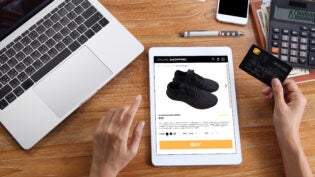In-App Messaging: How to Convert Trial Users to Paying Subscribers
By: YEC

You managed to get a lot of people to sign up for your free trial, and yet only a handful of them ever turned into paying customers.
Some may have used your product or service for a solid three weeks. Others, however, never made a peep after they signed up.
Our company is a two-sided marketplace. On one end, we cater to appointment-based service providers such as salons, massage therapists, spas, and fitness and therapy establishments. On the other end, we have members who are our customers’ clients.
For us to provide the ultimate service, we need to understand what we are doing well and what we need to improve on. So, we implemented an in-app messaging and CRM system, which not only gives us the benefit of hearing from our customers but their customers, as well.
This has given us the ability to connect with our users, find their difficulties and make their onboarding and conversion from trial to paid user a lot more effective.
The benefit of in-app messaging is that you can send targeted information to customers. In fact, some might say hyper-targeted.
Below are some benefits to using in-app messaging.
1. It immediately shows your value.
Trial users want to see the value of using the product or service immediately. If you’re unclear about it or they don’t see it, they will leave.
Make it clear about what your product can do. You can use in-app messages as a means to provide helpful information throughout the process as soon as they sign up. One way to do this is with a “Did you know?” kind of format.
Proper training of your product is essential, but ensure that your training is relevant to them. Show them features that they will find useful. And make it easy.
2. It makes onboarding more effective.
Onboarding is the process of getting users acquainted with a product or service as a means to actually begin engaging with the product or service, which is another goal of onboarding.
In-app messaging can be an effective channel to send customized messages that are specifically tailored for each customer, showing them how to get the most out of the product or service.
3. It provides a good touchpoint.
Another important part of the onboarding process is telling users about your most valuable features. Any customers that aren’t already using those features should be specifically targeted.
There could be a couple of reasons why some users aren’t using your most valuable features yet: Perhaps they don’t know about them or don’t understand how to use them. Either way, your in-app message should look the same.
4. It helps communicate product updates.
You want to include trial users in any and all of your product updates, and do so within the actual application itself so that users are more likely to try out the new feature.
It is also a good idea to ask for trial users’ feedback and to report any bugs that they mention so they don’t have to worry about these issues in the future. That leads us to our next point, which is to always use in-app messaging as a tool to convert feedback.
5. It provides an incentive.
You can also use in-app messages as a means to incentivize paying for the paid version of your product or service. The benefit of providing an incentive to become a paid user is that you create the sense that they are getting more value.
For example, if a user only has a few days left in their trial, you can offer some kind of deal, perhaps a discount if they sign up for three months.
Other Ways to Convert Trial Users
Effective in-app messages can definitely convert trial users into paying customers. However, there are a number of other ways that you can also use to bolster your conversions. Here are some of the big ones – the go-to strategies, so to speak.
1. Catch them early.
When it comes to converting trial users to paid subscribers, there are strategies that actually increase the likelihood of conversion and there are strategies that attempt to make a last ditch effort when users have barely interacted with a product.
In short, you will have better success when you strike while the iron is hot, when users are ripe for the picking. You get the idea. In other words, try to get people to convert when they are in the midst of using your product.
Offer them whatever it is you know they will find valuable — a discount, pricing an upgrade at a lower price or a consultation. Offer it up while the oven is hot. You don’t want it to go cold.
2. Don’t give up on inactive users.
Remember when we said you want to strike when the iron is hot? Certainly that is the most conducive environment to get someone to convert. However, you also don’t want to ignore inactive users. Perhaps they just need a nudge in the right direction.
Remind them again why your product or service is valuable to them. But the most important part? Include a call to action. Some ideas for a relevant call to action range from “try it now” to “see it in action” to “watch this video now.” You get the idea. Make it enticing.
In wrapping all of this up, converting trial users has never been easy. But by using in-app messages in specific ways, in addition to converting people when they are actively engaged with your product or service, you can convert trial users to paying customers much more steadily.
Author: Arash Asli is a co-founder and CEO of Yocale.com, an online scheduling and marketing platform for small businesses.












